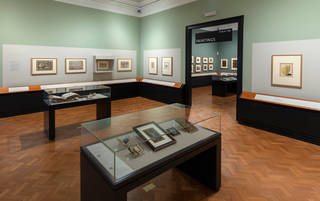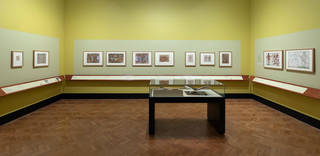This display presents for the first time watercolour during the Renaissance as a unified art form, highlighting its versatility and pivotal role in understanding, interpreting and documenting the natural world. It explores the development of watercolour, from manuscript illumination to depictions of people, places and nature that more closely resemble watercolours as we know them today.
During the Renaissance, an era of expanding horizons and cultural exchange, watercolour flourished across Europe, Asia and the Americas. Its versatility, portability and immediacy made it ideal for painting directly from life. It was also widely used for designs, copies, modelli and cartoons. However, the Renaissance watercolour has never been considered as a coherent artistic genre and due to their light sensitivity, watercolours are seldom put on permanent display. This display will therefore be a rare opportunity to experience these delicate objects.
The display is divided into six themes:
Techniques and context opens the display with a selection of introductory objects and props, complemented by a film on watercolour technique to introduce the three main types of objects featured in the display: illuminated manuscripts, portrait miniatures and coloured drawings.

Natural history presents a selection of watercolours by the French botanical artist Jacques Le Moyne de Morgues and others from the Paper Museum of Cassiano dal Pozzo. These works demonstrate how curiosity about the natural world flourished during the Renaissance, and how watercolour was the ideal medium to capture such delicate details.

Landscape showcases how watercolour landscapes initially flourished in the backgrounds of scenes in illuminated manuscripts, and how, during the Renaissance they achieved greater prominence, thanks to watercolour's capacity to faithfully record the world from life and out of doors.
The versatility of watercolour focuses on the variety of functions that watercolour served during the Renaissance. It also explores how watercolour can appear either as a fluid and quick sketch, or as a detailed and careful study, to broaden our common understanding of the medium.

Capturing likeness looks at the representation of the human figure in costume studies, heraldry subjects and portrait miniatures, exploring the different ways a person's likeness could be conveyed during the Renaissance.

Cultural connections shows that watercolour flourished not only in Europe but also in Mughal India (early 16th to the mid-18th century). Some watercolours in this theme showcase the Mughal court's particular interest in natural history, while others explore the relationship between works made by Mughal and European artists. Watercolours from this period reveal fresh ways of seeing and broadened perspectives, and today these images can be seen as a social and cultural dialogue between East and West.

